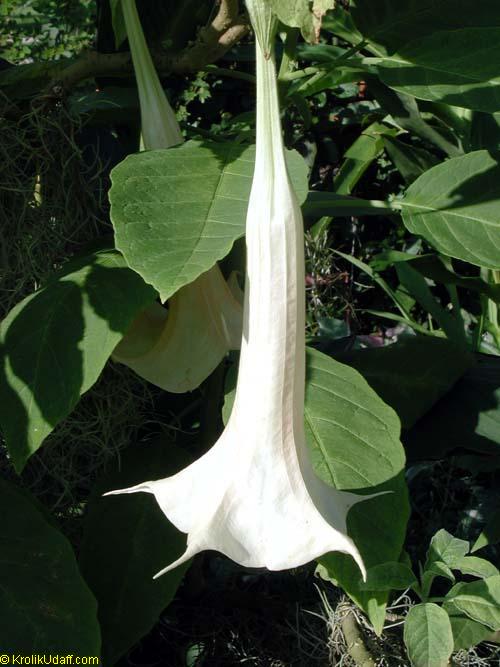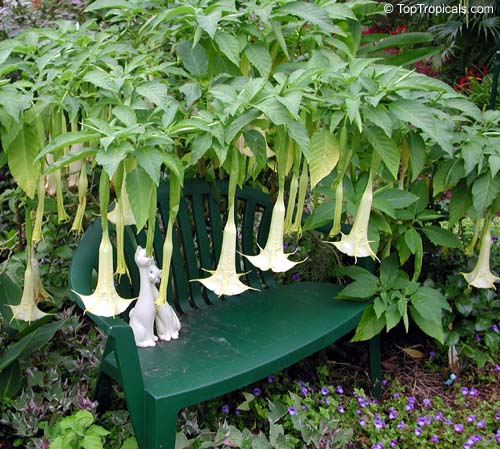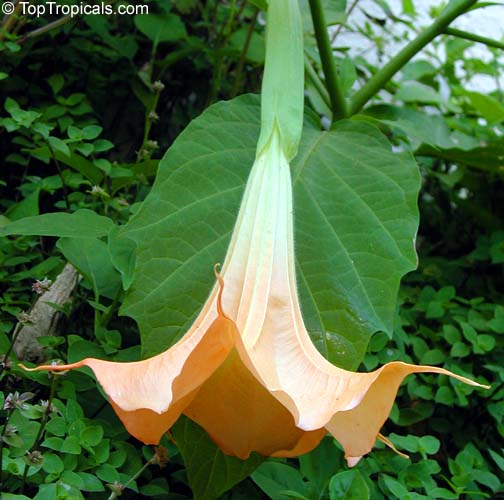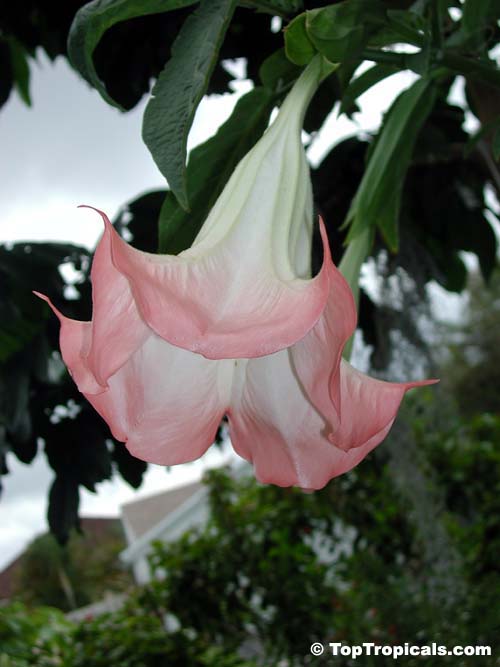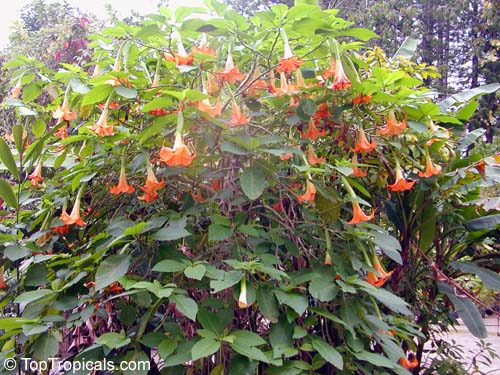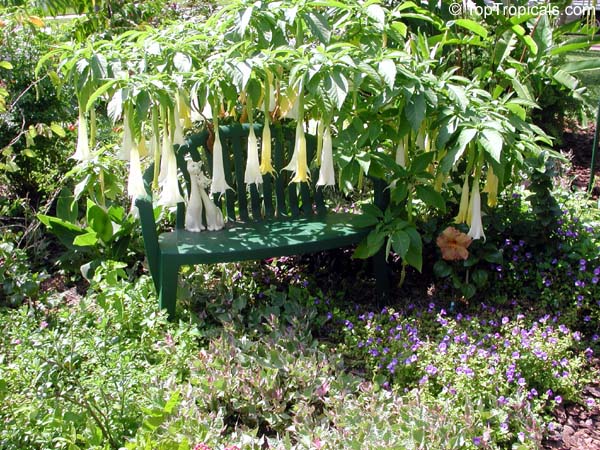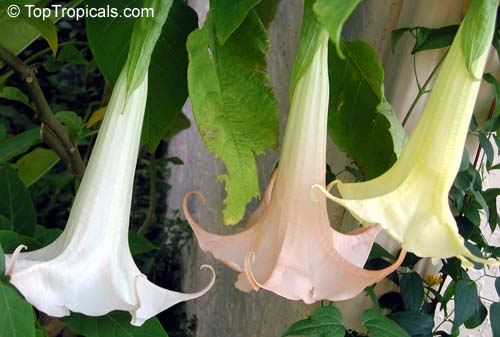Brugmansia - Angel's Trumpet
click on image to enlarge
Family: Solanaceae.
Belonging to the Deadly Nightshade family, which also includes the tomato, Brugmansia comprises about 20 different species, nearly all of them poisonous. There are a number of cultivars, some with pink or yellow flowers. It's a showy landscape evergreen plant. B. Candida, which in time can become a small tree, makes a striking garden ornamental with its large, white, trumpet-shaped flowers that appear in great quantities hanging like bells. The velvety, greyish-green leaves are spear-shaped and the wood is quite brittle. This is one of the longest of the Brugmansias. The more sun, the more flowers. Can be pruned into a nice small accent tree. Put it where you can enjoy the fragrance at night. Blooms on and off all year. Easy to grow. Not fussy about soil or water. Likes lots of fertilizer. Spread: 6 Feet.
Flower: Various colors-white, pink, peach, gold, and others in between. Single
and double flowers.
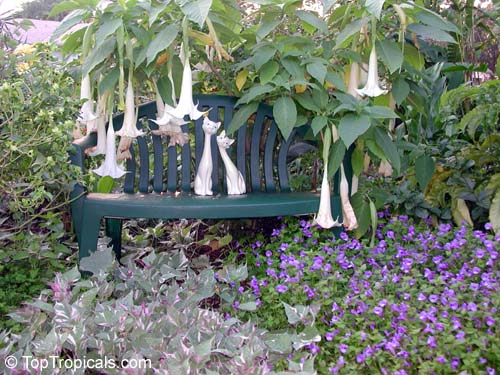
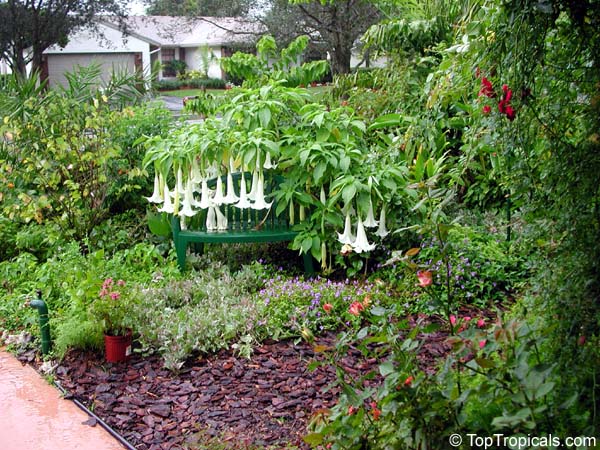
This beautiful tree creates a perfect perfumed privacy for the Two Love Birds...
Hardy to zone 7, these plants are also easy to keep in large pots and bring into the house for the winter. However, they require regular, heavy feeding to consistently produce the showy, trumpet shaped, pendant flowers. Temperature & growing conditions can cause great variation in the size & color of the flowers. You may see different color flowers on the same plant as well:
Most are intoxicatingly fragrant at night! In many parts of the world, these plants are still a source of pharmaceutical tropane alkaloids such as scopolamine and atropine. This deadly toxic genus does not deserve the negative press it has been getting. See article about Special Effects of Brugmansia.
B. Sanguinea - high elevation species with striking red and yellow flowers that attract enthusiastic hummingbirds. Known extensively throughout South America for its medicinal virtues and ritually brewed with Trichocereous Pachanoi as one interpretation of Cimora. In Ecuador it is currently being cultivated for scopolamine. Easy to grow from seed. Distinguished from all others by the red flowers. Rare; cuttings are almost impossible to get. Prefers cool areas.
